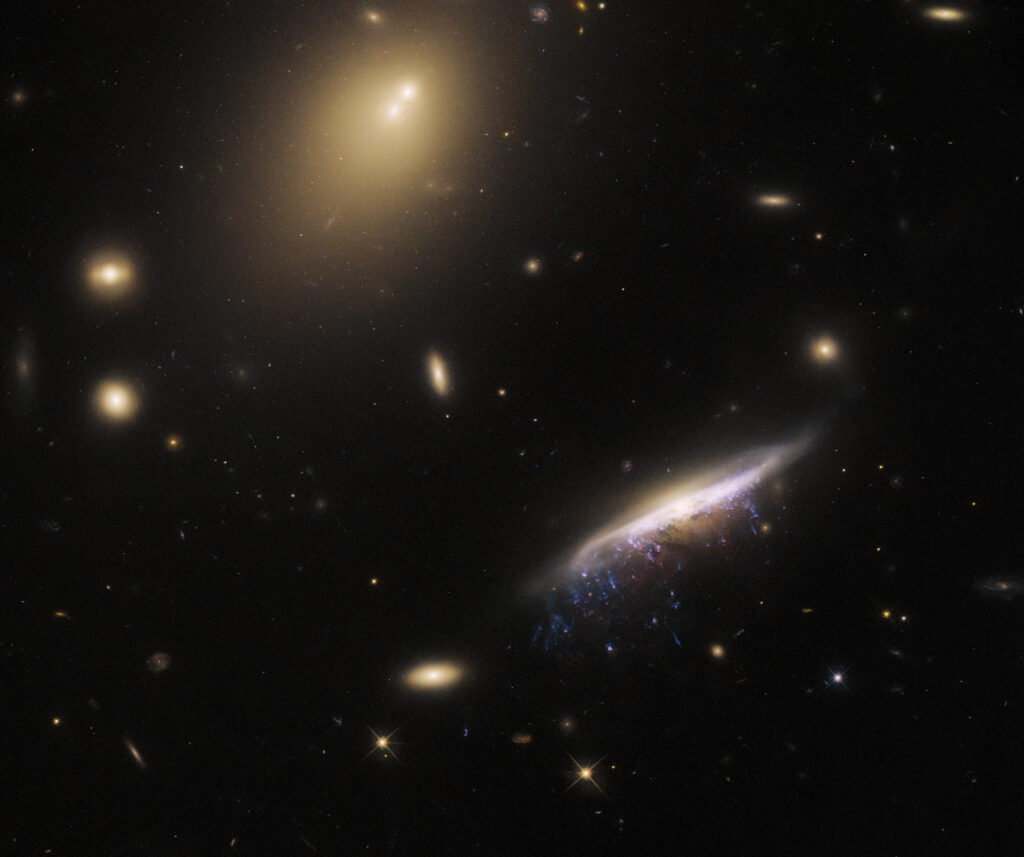The presented image was published on the Hubble mission website. In its lower right part, you can see a very unusual galaxy that looks like it has just been painted by an artist. Streams of star-forming gas literally “drip” from its disk, as if it is fresh paint.

The galaxy photographed by Hubble is known under the designation JW100. It is located at a distance of 800 million light-years from the Milky Way in the direction of the constellation Pegasus. JW100 is classified as a spiral galaxy. We see it from the edge, which makes it possible to observe gas flows stretching from its disk. Sometimes they are also compared to “tentacles”, which is why JW100 is also called a “jellyfish galaxy“.
The gas “tentacles” of the JW100 were formed as a result of a process known as separation under pressure. It occurs when galaxies collide with diffuse gas clouds located in intergalactic space. They act as a headwind, carrying away gas and dust from these galaxies, which leads to the formation of characteristic streamers like those that adorn the JW100.
Several other interesting objects can also be seen in the Hubble image. The characteristic elliptical patches are other galaxies that are part of the same cluster as JW100. In the upper part of the image, a light area is especially highlighted, containing two bright objects in the center. This is IC 5338 — the brightest of the galaxies in the entire cluster.
Objects like IC 5338 are classified as a cD-type galaxy. It is not unusual for them to have multiple nuclei, as they grow by absorbing smaller galaxies — and this process takes time. You can also pay attention to the many bright dots on the edges of IC 5338. These are globular clusters.
According to https://esahubble.org
Follow us on Twitter to get the most interesting space news in time
https://twitter.com/ust_magazine

